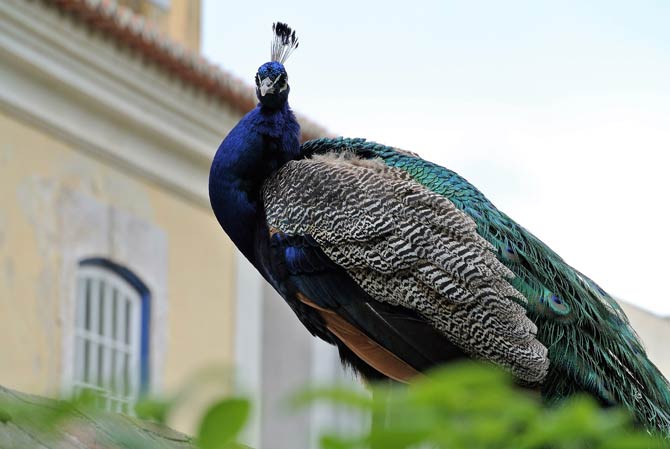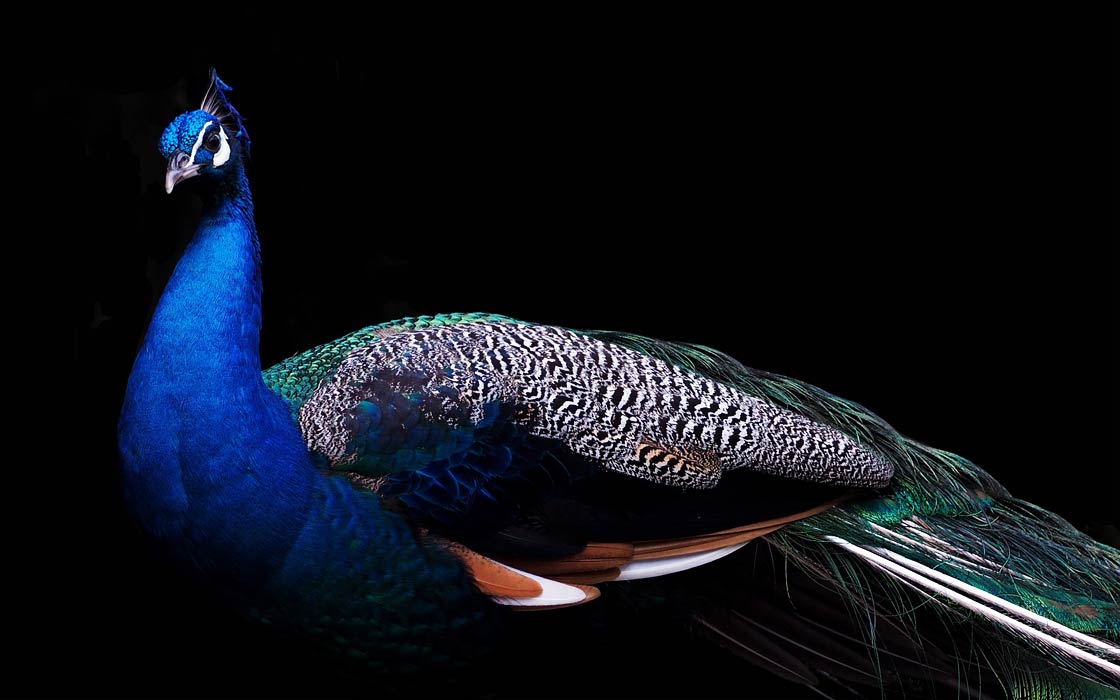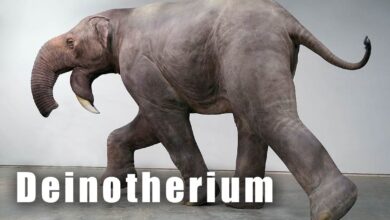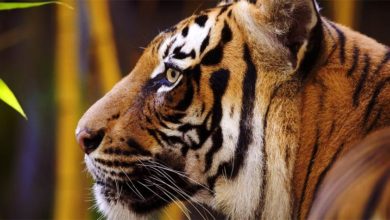Peacocks (peafowls)
Peacocks are among the most beautiful and dignified birds. The wonderful coloration of these unusual animals meant that in the past they were even bred at royal courts. Interestingly, in some cultures the cry of a peacock is seen as a harbinger of impending danger…
Classification
- Kingdom: Animalia
- Phylum: Chordata
- Class: Aves
- Order: Galliformes
- Family: Phasianidae
- Subfamily: Phasianinae
- Genus: Pavo
No matter how we look at it, a peacock is in a sense… a hen, but it is incomparably prettier 🙂 Peacocks belong to the burrowing birds and to the family Phasianidae.
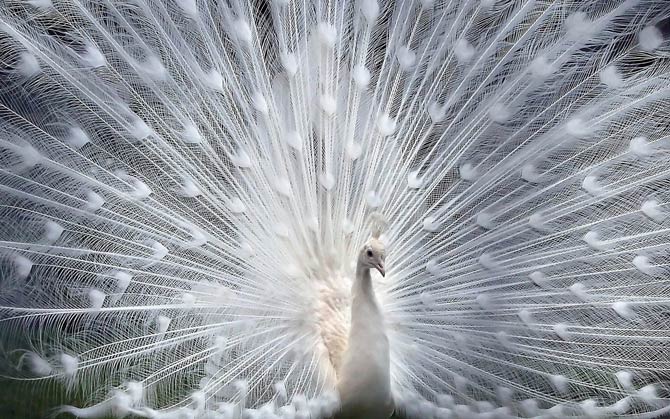
There are the following species of peacocks:
- Indian peafowl (peacock), common peafowl (peacock), blue peafowl (Pavo cristatus)
- Green peafowl (peacock) (Pavo muticus)
- Congo peafowl (peacock) (Afropavo congensis), known as the African peafowl (peacock) or mbulu
- Emerald peacock – a cross-breed between an Indian peacock and a green peafowl.
Peacock train, tail, plume
The famous peacock train (plume) consists of about one hundred and fifty fabulously colored feathers with characteristic, sparkling “peacock eyes”, which often create extremely original patterns. Interestingly, among the peacocks there are sometimes white, motley and even black varieties.
Occurrence and environment
In the wild, peacocks live mainly in wet areas of Asia (India) and on the islands of Ceylon and Java. They live in the forests surrounding the valleys of streams and rivers, on the edges of wide clearings with occasional shrubs. They also like to stay in arable fields, especially sugar cane.
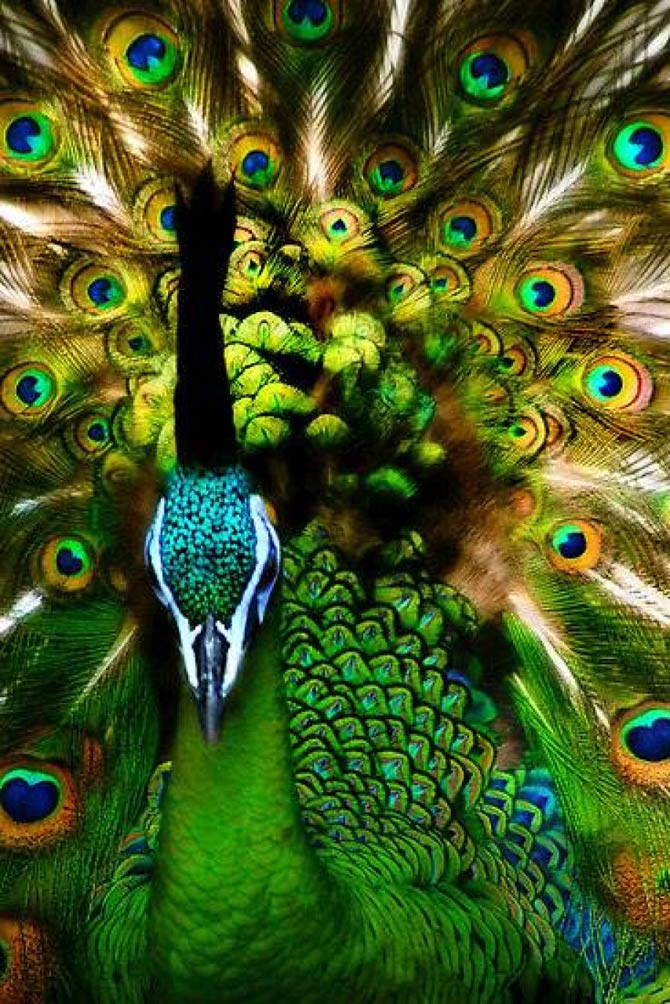
Diet
Peacocks eat almost anything. They eat a variety of seeds, shoots and fruits. Their diet also includes snails, earthworms and insects. These birds need large spaces to live, so for breeding purposes they can only be kept in large gardens and parks.
Mating
Peacock mating is truly an amazing sight. Shifting from foot to foot, the male spreads the magnificent long tail feathers in a wide fan and strolls proudly in his territory. He shakes his feathers, which make rustling sounds. After the mating is over, the male loses all decorative feathers, which, however, grow back after a few months.

Data / Dimensions (size)
Indian peafowl (peacock), common peafowl (peacock), blue peafowl (Pavo cristatus)
- Length:
- male: 195 to 225 cm (77 to 89 in)
- female 80-95 cm (2.6- 3.1 ft)
- Wingspan: 140 – 160 cm (4.6 – 5.2 ft)
- Weight:
- male: 4–6 kg (8.8–13.2 lb)
- female: 2.75–4 kg (6.1–8.8 lb)
- Clear sexual dimorphism – the male has a colorful tail and is larger.
Green peafowl (peacock) (Pavo muticus)
- Length:
- male: 180–300 cm (5 ft 11 in–9 ft 10 in) (including the train 140–160 cm (4 ft 7 in–5 ft 3 in))
- female 100–110 cm (3 ft 3 in–3 ft 7 in)
- Wingspan: 120 – 160 cm (3 ft 11 in – 5 ft 3 in)
- Weight:
- male: 3.85 – 5 kg
- female: 1 – 1.2 kg
In the case of this peacock, there is a huge sexual dimorphism in size and weight between the female and the male. The male has a colorful tail.
Congo peafowl (peacock) (Afropavo congensis), known as the African peafowl (peacock) or mbulu
- Length:
- male: 64–70 cm (25–28 in)
- female: 60–63 cm (24–25 in)
The Congo peacock does not have the tail characteristic of other peacocks. Its plumage is also not very colorful.
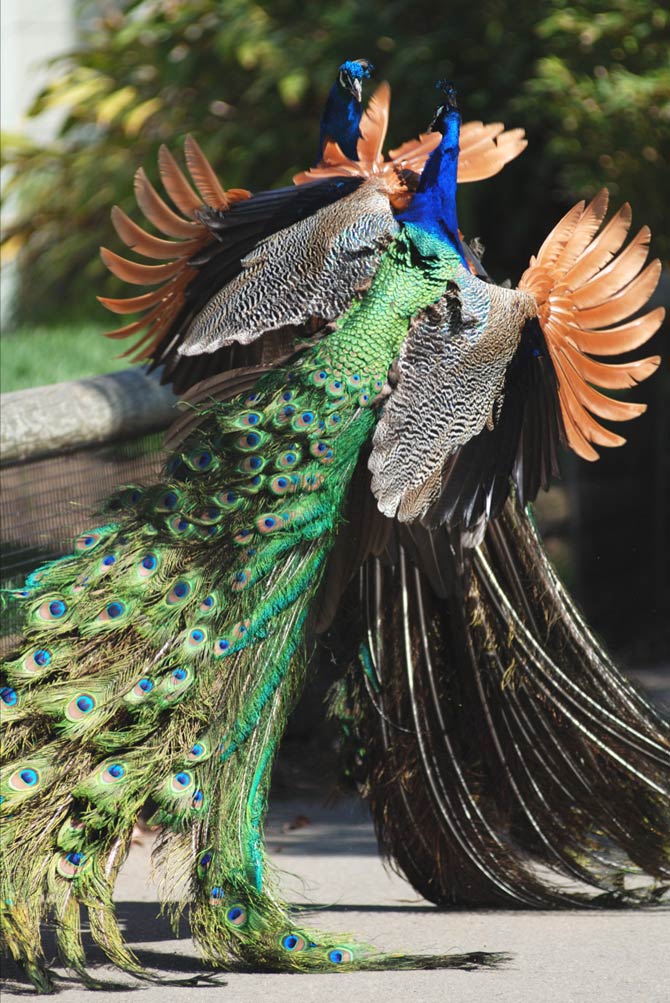
Peacock – interesting facts
- Peacocks are among the most long-lived birds. Properly cared for, they can live up to 30 years.
- Peacock feathers can reach 1.6 meters in length.
- The Indian peacock’s delicacy is… young cobras.
- In India, peacock meat was once considered a delicacy. Peacocks… brains and tongues were among the most exquisite dishes.
- Peacocks are famous for their great curiosity and like hiking.
- The peacock’s voice is extremely screaming and loud, and therefore very unpleasant.
- Although the peacock lives mainly on the ground, it can easily rise into the air when needed.
- In some cultures, the cry of a peacock is seen as a harbinger of an impending storm.
- The only peacock species living outside of Asia – the Congo peacock – was not discovered until 1936.
